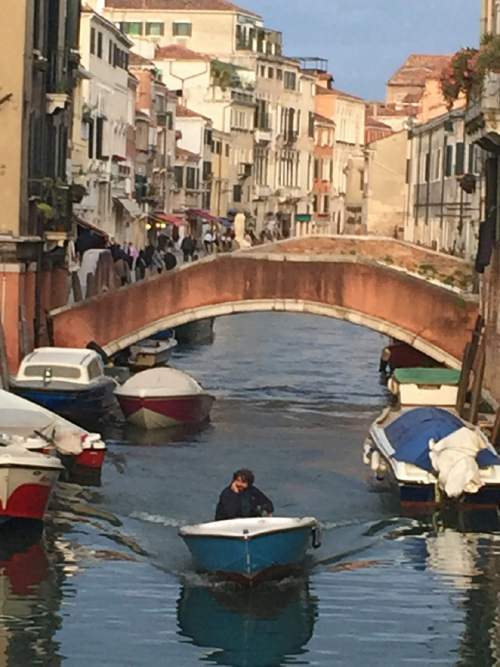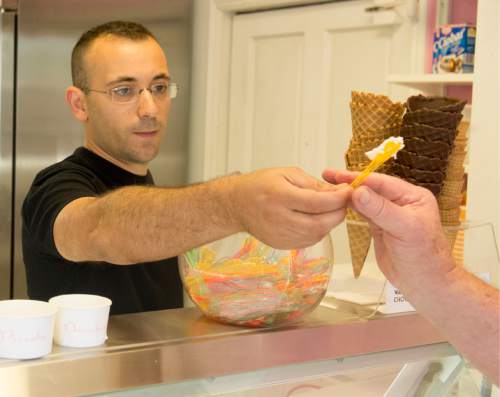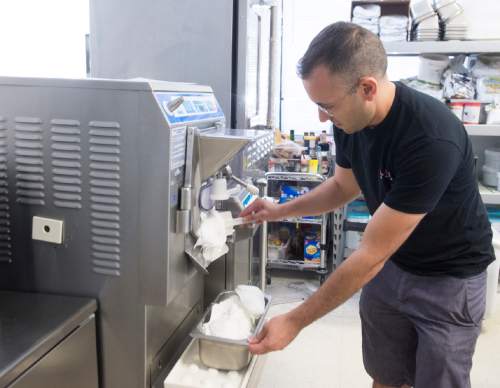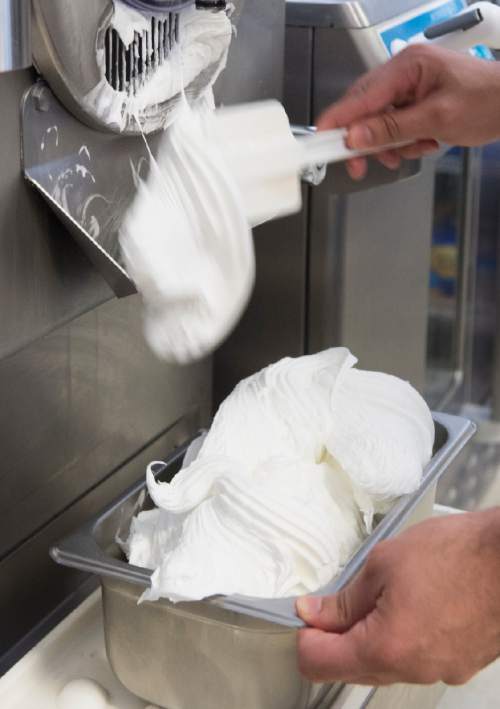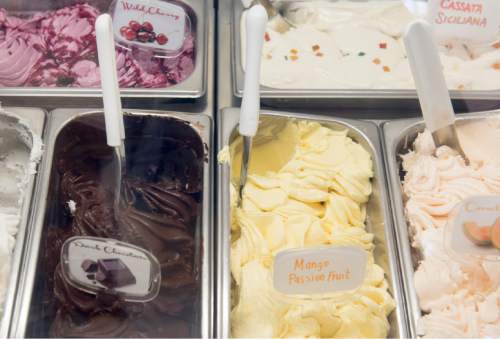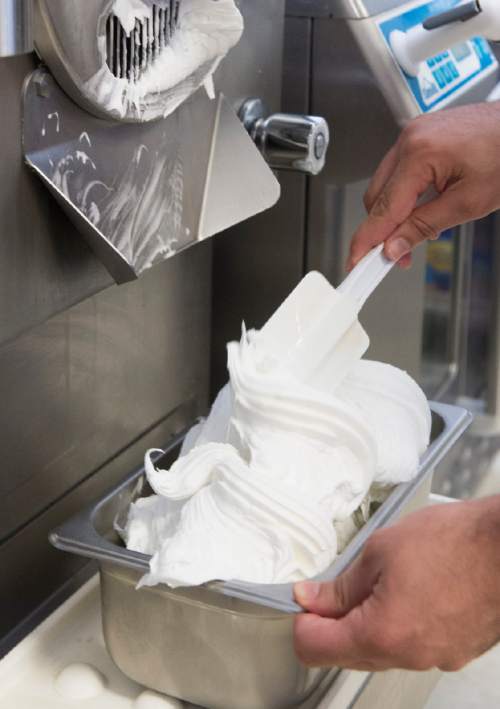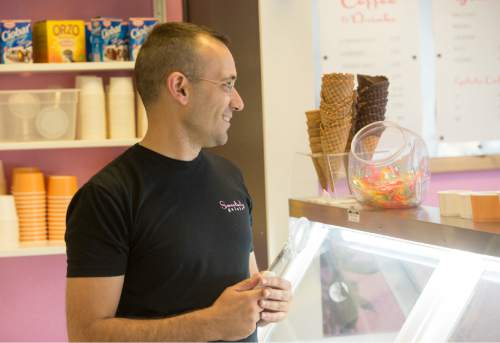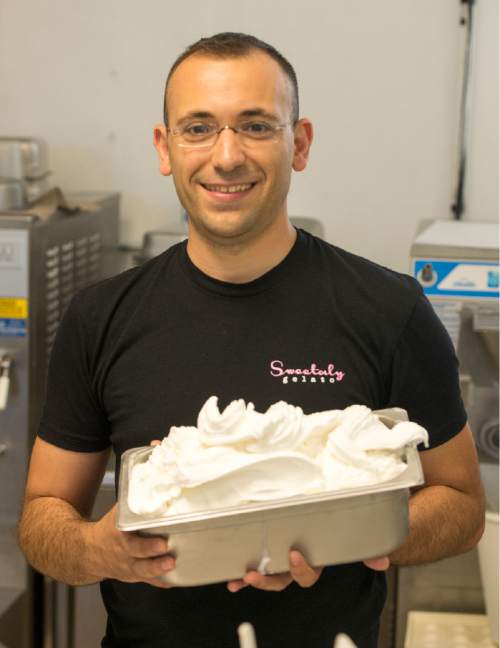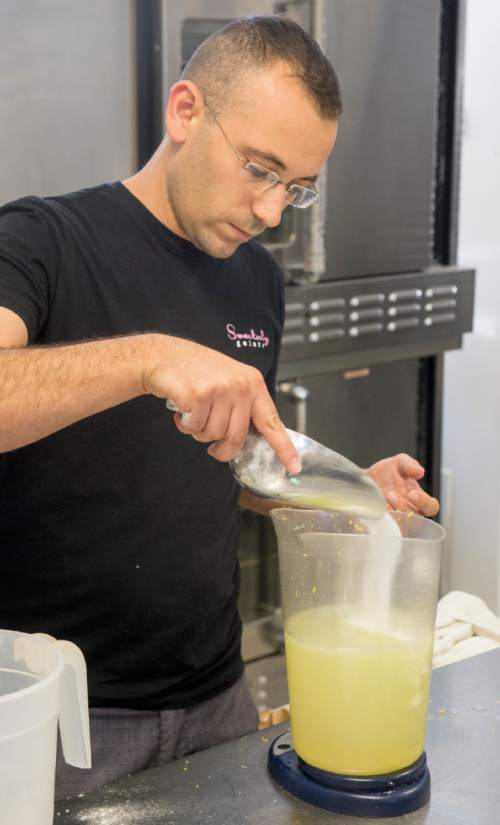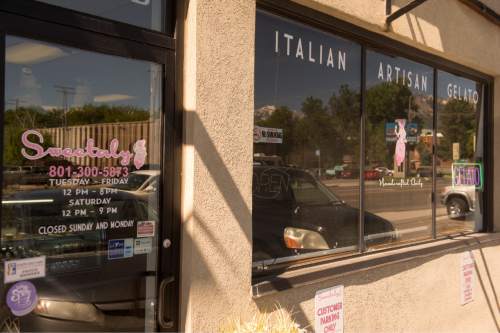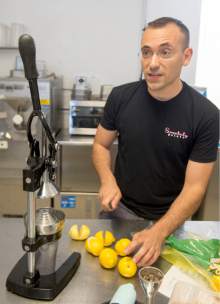This is an archived article that was published on sltrib.com in 2016, and information in the article may be outdated. It is provided only for personal research purposes and may not be reprinted.
Rome • All roads lead to gelato.
It's true. You can sit at a sidewalk cafe across the street from the ancient Roman Colosseum, where Christians once were fed to lions, and slurp up the sweet delicacy that is as important to Italians today as pizza. Those early Christians probably would have liked gelato, too — especially on a warm summer day at Rome's biggest entertainment venue.
Pondering that from a tourist's perch in May, I became determined to conduct a study of gelato in Rome, Florence and Venice.
So what is gelato, anyway? It contains about one-half the milk fat as ice cream. And gelato is only 25 percent to 30 percent air, compared to ice cream's 50 percent. But in the end, it's all about what happens in your mouth — oh, baby.
My Colosseum refresher of a three-scoop combo of double chocolate, pistachio and caramel put me on a cool endorphin high. Gelato lovers choose their combinations the way wine connoisseurs select a vintage. But for this novice, it was hard to go wrong with any combo.
Energized, I wandered through Rome, taking in the remarkable ruins that stand here and there within the modern city. Strolling through the Imperial Forums felt like getting sucked through a space-time wormhole to the era of gladiators and the cruel and salacious Emperor Caligula.
But as history revealed, the followers of Jesus of Nazareth won out in the long run — Emperor Constantine embraced Christianity in A.D. 313. Much of the art of the latter years of the Roman Empire, as well as the Renaissance, focuses on Christian themes. The ceiling of the Sistine Chapel is just one of thousands — although Michelangelo's renderings are something to behold. Amazingly, he did it without gelato.
Following my guidebook, I eventually stumbled upon the fantastic Trevi Fountain with dazzling aqua-colored water. Legend has it that its source was found by a virgin who guided thirsty Roman troops there in 19 B.C. Completed in 1762, the huge Baroque waterworks is a wonderful sight where tourists sit licking gelato cones and snapping selfies.
Of course, you don't have to go all the way to Italy to score gelato. Here in Salt Lake, you can visit Sweetaly, where proprietor Francesco Amendola makes the magical stuff from scratch. He went to school in Perugia, Italy, to learn his craft. He is a gelatiere — a gelato artisan. "We make everything fresh every day," he said.
For a big city, I found Rome delicious on many levels. You gotta hand it to the Italians — they know how to live. It's all about lifestyle: what they wear, what they eat, what they drink, and then there's all that wonderful architecture and art. We could learn something from them.
—
Wonders of Florence • Italy also has a great rail system. Soon I found myself on a bullet train to Florence at 258 kilometers per hour — almost 160 mph.
In about two hours' time, I was checking into an old monastery that has been converted into a hotel on the south side of the Arno River, outside the tourist district. The place, Casa Santo Nome di Gesù, was quaint and charming with a rich interior of wood and glass and paintings of nuns and priests. My bedroom window looked over a courtyard with a beautiful view of the Cappella di Brancacci built in the 14th century — that alone was worth 109 euros a day.
Even better, the folks at the front desk steered me to little neighborhood restaurants. Cool — rubbing shoulders with friendly locals who helped with the menu. The food was everything they say it is, and the Italians are very welcoming.
Florence is a small Renaissance city, and you can walk to most of its treasures. Il Duomo di Firenze, otherwise known as Cathedral of Saint Mary of the Flowers, is at its center on the north side of the river and is too fabulous to describe. Its size and intricate craftsmanship are as astounding as the Taj Mahal. The Duomo was completed in 1436 after 140 years of construction.
Nearby, I pulled up at an outdoor cafe on the Piazza della Signoria, ordered a bowl of chocolate, strawberry and vanilla gelato and drank in the intoxicating surroundings — a dreamland of narrow cobblestone streets, wonderful old buildings and piazzas.
Among Florence's riches is Michelangelo's David, housed in the Accademia Gallery. The 17-foot-tall marble sculpture is more captivating than you can imagine from pictures. Transfixed, I just didn't want to leave.
On my way back to the quietude of the old monastery, I crossed the La Carraia Bridge and came upon the Gelateria La Carraia. I popped in to meet Eleonora Innocenti, who served up a cup of melon and pistachio gelato — what a taste explosion. When I asked her about the importance of gelato in Italy, she smiled and said, "È un modo di vivere della vita" — it's a way of life.
Everybody should visit Florence at least once before they die — but hopefully not at peak tourist season.
—
Floating through Venice • The train to Venice takes travelers right to the dock and waiting water taxis. Partly because there are no automobiles in Venice, it is imbued with a wonderfully relaxing atmosphere. Arriving in the beautiful city is something like walking into a painting — a perfect place to hang out and eat and drink and watch the goings-on.
I did take in the magnificent St. Mark's Cathedral, but was more content exploring side streets or riding the water taxis. It was time to seriously kick back. And, of course, gelato has a role to play there.
Under a beautiful blue sky, folks were lining up at il Gelatore, in a cute neighborhood that once was the Venetian Jewish ghetto. There clearly was a "before" and "after" appearance to the customers — anticipation giving way to grins of satisfaction.
Sadly, all journeys must end. Leaving Italy was like kissing a new lover goodbye — sweet sorrow. But taste buds can stir the imagination back at home. In Salt Lake City, as I watched Amendola making gelato from scratch, a couple entered his shop and began speaking Italian. He didn't know them, but they were complimenting him on his work.
Giovanni Bona is from Italy. He met his American wife, Judy, there while she was on a religious mission. They now live in Provo but made the 45-minute drive to Sweetaly's South Salt Lake location at 456 E. 3300 South after they heard Amendola made the real thing. (Other Sweetaly locations are 1544 E. Stratford Ave. in Salt Lake City and in Draper at 519 E. 12300 South.)
"I had to come," Giovanni Bona said. "The first bite was amazing. You just don't find gelato like this around."
You gotta hand it to the Italians — they know gelato.
Gelato in the City
Experience creamy Italian gelato at one of these Salt Lake City shops.
Amour Cafe • 1329 S. 500 East, Salt Lake City; 888-554-6845. Open daily, 7 a.m. -7 p.m.
Capo Gelataria • 262 S. 200 West, Salt Lake City; 801-322-3556. Open Monday-Friday, 11 a.m. -10 p.m.; Saturday, 11 a.m.- 11 p.m.; Sunday, noon-9 p.m.
Dolcetti Gelato • 902 E. 900 South, Salt Lake City; 801-485-3254. Open Monday - Thursday, 11 a.m.-10 p.m.; Friday- Saturday, 11 a.m.-11 p.m.
La Bonne Vie • Inside the Grand America Hotel, 555 S. Main, Salt Lake City. Open daily at 10 a.m.
Sweetaly Gelato • 1594 E. Stratford Ave., Salt Lake City, 801-300-5873; and 465 E. 3300 South, South Salt Lake, 801-300-5873. Open Tuesday-Thursday, noon-8 p.m.; Friday-Saturday, noon - 9 p.m.



